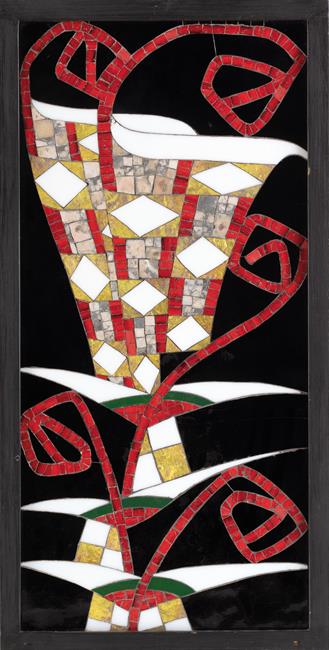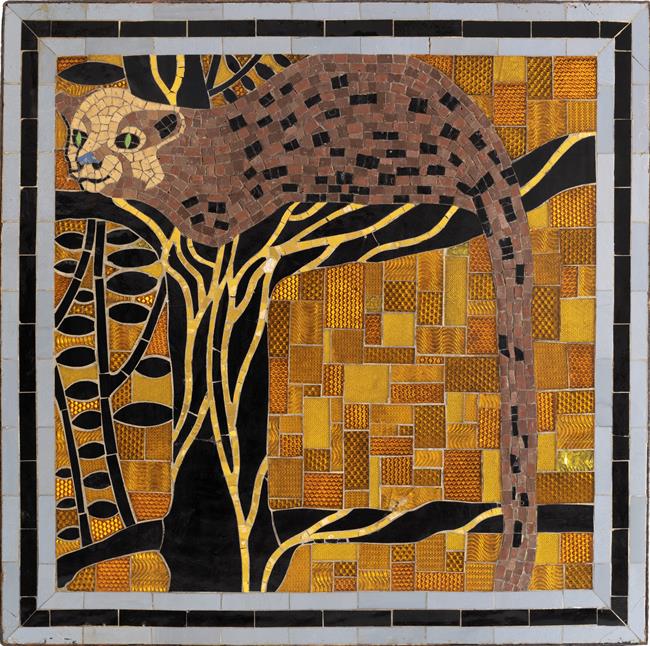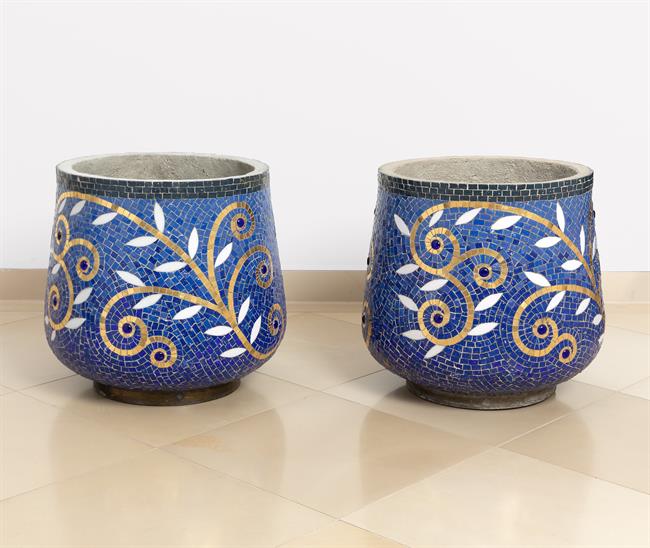 Mosaic Calla
around 1910
Mosaic Calla
around 1910
Leopold Forstner
1878 Leonfelden - Stockerau 1936Leopold Forstner was an important mosaic and glass artist of the Art Nouveau. He was born in 1878 in Leonfelden, Upper Austria, as the son of a carpenter. Due to his proximity to his father's profession, he discovered his passion for craftsmanship at an early age. After attending the State Crafts School in Linz, Leopold Forstner completed an apprenticeship at the Glass Painting and Mosaic Institute in Innsbruck. Forstner continued his education at the School of Applied Arts of the Austrian Museum of Art and Industry, a predecessor of today's University of Applied Arts in Vienna. There he studied in the class for figurative painting under Prof. Karl Karger and Koloman Moser, who would have a great influence on Forstner's artistic career.
After Leopold Forstner initially worked as a graphic artist, painter and illustrator, he succeeded in presenting his works at the Wiener Kunstschau (1908) exhibition organized by Josef Hoffmann and Gustav Klimt. Forstner's first mosaics were still strongly oriented towards the Venetian-Florentine tradition and technique, while later he became increasingly famous for the magnificently combined mosaics and plate mosaics. Although Forstner worked a lot with his own designs, he mainly cooperated with contemporary artists such as Gustav Klimt, Josef Hoffmann, Emil Hoppe and Otto Wagner. An outstanding example of Forstner's artistry is a frieze created for the dining room in the Palais Stoclet in Brussels (1909-1911, based on a design by Gustav Klimt), which is part of the UNESCO World Heritage Site.
“Know the material thoroughly, know the time and do not kill the material by drawing. Every design must correspond to the material and be entirely conceived in the technique. It must not be executable, so to speak, in any other technique.”
-
Mosaic Calla around 1910
-
Mosaic Wildcat around 1908
-
Two Flowerpots around 1905

 Mosaic Wildcat
around 1908
Mosaic Wildcat
around 1908
 Two Flowerpots
around 1905
Two Flowerpots
around 1905